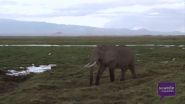(Press-News.org) In a new study published today in The Veterinary Journal, scientists from the University of Surrey warn about the numerous risks posed to racehorses from the misuse of cobalt chloride, a banned performance-enhancing agent that has been used illegally by trainers in Australia and USA. The team of researchers have uncovered that when excessive levels of the alleged performance-enhancing substance are administered to a horse, it can cause serious cardiovascular issues, potential nerve problems, thickening of the blood and thyroid toxicity. The researchers also pointed to the lack of evidence for enhanced performance in horses and human athletes.
Cobalt, required by all horses in order to survive, is normally present at very low levels through various feedstuffs. However, excessive amounts of impure formulations of the substance, which can be administered easily as a powder, feed supplement or injection, can lead to severe side effects, such as long-term damage to vital organs such as the heart. Indeed in humans, cobalt salts have been used in the past to treat rare forms of anaemia. However, it has been associated with a variety of adverse effects, including gastrointestinal neurologic, cardiovascular, and thyroid problems, and as a result, its use has been discontinued.
Not a prescription medication, various cobalt salts are available from a variety of commercial sources. The salts are impure and are inexpensive, easily accessible and not subject to medicines regulation.
"We have grave concerns over a potentially lethal practice in the race horsing industry, and are most concerned that some trainers continue to use Google as their source of information," said lead author Professor Ali Mobasheri from the University of Surrey.
"It is the duty of veterinary surgeons working in the industry to ensure that horse trainers are aware of the dangers of its 'amateur' use.
"Currently there is no evidence to suggest that cobalt chloride can enhance human or equine athletic performance. It is our hope that this study will increase greater awareness and prompt a broader discussion about the misuse of this substance."
INFORMATION:
Media enquiries: Peter La, Media Relations Office at the University of Surrey, Tel: 01483 689191 or E-mail: p.la@surrey.ac.uk
Notes to Editors:
About the University of Surrey
The University of Surrey is one of the UK's leading professional, scientific and technological universities with a world class research profile and a reputation for excellence in teaching and research. Ground-breaking research at the University is bringing direct benefit to all spheres of life - helping industry to maintain its competitive edge and creating improvements in the areas of health, medicine, space science, the environment, communications, defence and social policy. Programmes in science and technology have gained widespread recognition and it also boasts flourishing programmes in dance and music, social sciences, management and languages and law. In addition to the campus on 150 hectares just outside Guildford, Surrey, the University also owns and runs the Surrey Research Park, which provides facilities for 110 companies employing 2,750 staff. The University of Surrey was recently ranked 4th in The Guardian league table of UK universities for 2015.
In a study that contradicts the received wisdom on health impacts of climate change, scientists say that we shouldn't expect substantial reduction in winter deaths as a result of global warming. This new research is published today (Friday 19 June) in IOP Publishing's Environmental Research Letters journal.
The research team was led by Professor Patrick Kinney of Columbia University in the USA.
Professor Kinney said "As Dr Margaret Chan told delegates at the recent World Health Assembly, we need to know the potential impacts of climate change on health so that we can ...
Doctors often misdiagnose zinc deficiency, and seem to be unaware of the impact of excess zinc on the body, shows a small audit of clinical practice, published online in the Journal of Clinical Pathology.
Too much zinc, taken in the form of dietary supplements, may disrupt copper uptake, leading to neurological problems and anaemia, the evidence indicates.
Zinc is an essential trace element that is required in daily quantities of 5.5 to 9.5 mg for men, and 4 to 7 mg for women. But zinc supplements are usually only available in formulations of 45 or 50 mg. The US recommended ...
The inclusion of experimenters -- who are unlikely to become habitual users -- in e-cigarette prevalence studies is of 'questionable' value for monitoring population public health trends, finds research published online in the journal Tobacco Control.
Setting the threshold at a minimum of use on six out of the past 30 days would eliminate many of those who are motivated primarily by curiosity and unlikely to become regular users. And it would provide a more accurate picture of use, say the researchers.
There is no uniform definition for current users of e-cigarettes. ...
Endometrial cancer (EC) can spread by several routes, including the lymph system, blood vessels, through the uterine wall, as well as through the fallopian tubes into the peritoneal cavity, but the association of transtubal dissemination of EC with cancer stage, histological type, and mortality is unknown. However, according to a study published June 18 in the JNCI: Journal of the National Cancer Institute, women who have undergone a tubal ligation (TL) and develop more aggressive types of EC may have lower mortality. The authors postulate that women who have had TL have ...
DALLAS, June 18 -- Individual state stroke legislation plays a compelling role in certifying primary stroke centers and improving availability and accessibility of care to acute stroke patients, according to research in the American Heart Association journal Stroke.
A hospital that has been certified as a Primary Stroke Center (PSC) has met specific standards for delivering prompt stroke care. To be eligible, hospitals must meet several criteria, including setting up a dedicated stroke-focused program staffed by medical professionals trained in stroke care.
Researchers ...
University of Washington biologist Samuel Wasser is a pioneer in using DNA evidence to trace the origin of illegal ivory and help police an international trade that is decimating African elephant populations.
The broadest application yet uses DNA from tons of ivory samples associated with large-scale trafficking. Results show that over the past decade, ivory has largely come from just two areas in Africa -- one each for the forest and savanna elephants. The findings are published June 18 in the journal Science.
'Africa is a huge continent, and poaching is occurring ...
This news release is available in Japanese.
New genetic tools are helping researchers to trace illegal ivory back to the elephant populations from which it came, and they might help law enforcement crack down on poaching in the future. Elephant poaching is happening at rates that threaten African populations with extinction. After analyzing 28 ivory seizures made between 1996 and 2014 -- each of them containing half a ton of tusks or more -- Samuel Wasser and colleagues suggest that the illegal ivory trade has been fueled primarily by two poaching hotspots in Africa ...
This news release is available in Japanese.
Researchers have found evidence of shared decision-making among a troop of wild baboons, providing insight into how animals that live in socially complex, hierarchical societies reach consensus on decisions that affect the entire group. Until now, researchers had wondered if animals with clear hierarchies, such as primates or wolves, use democracy to reach a consensus -- or if their decisions are governed by dominant leaders. It's been difficult to study this, however, because recording the behavior of many individuals simultaneously ...
This news release is available in Japanese. A new study aiming to provide a better understanding of how injection wells in the U.S. influence earthquake activity cites wastewater injection rate as a critical factor. In the study, the highest-rate wastewater disposal wells analyzed were nearly twice as likely to be associated with earthquake events compared to their lower-rate counterparts. Earthquakes can be induced by industrial processes, a fact established decades ago. Since 2009, when seismicity in the U.S. midcontinent began to surge, earthquakes induced by the underground ...
This news release is available in Japanese. Opening Iran's national uranium enrichment plant to multinational involvement could limit the long-term risks of Iran's nuclear program as restrictions on it expire, according to this Policy Forum. In July, Iran is expected to sign an agreement restricting its nuclear program, but also affirming its right to pursue uranium enrichment as those restrictions end in 2025 and beyond. Authors Alexander Glaser, Zia Mian, and Frank von Hippel suggest that selling shares of Iran's uranium enrichment plant to other countries could help ...


